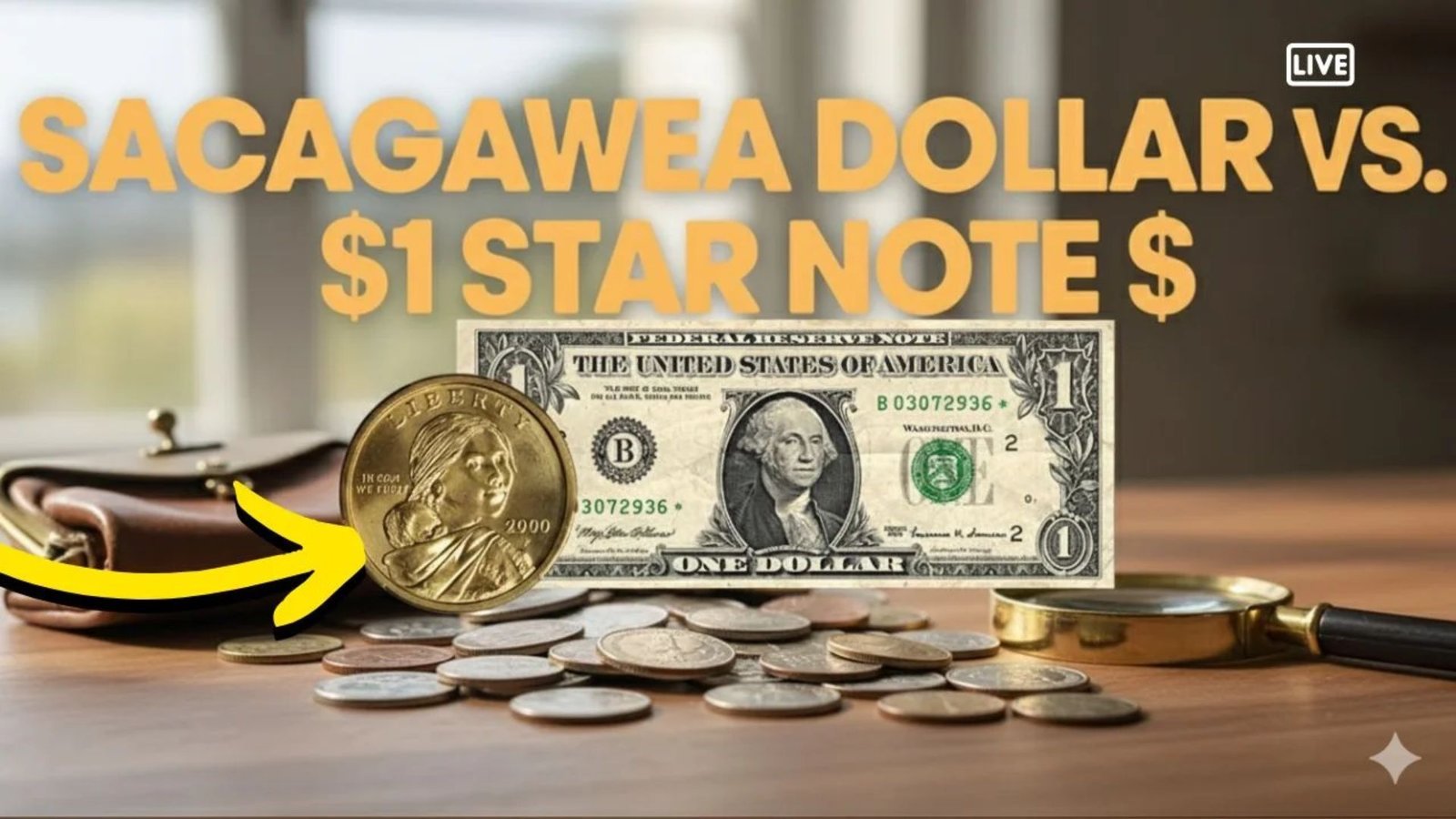Imagine standing in line at the grocery store, jingling a few coins in your pocket, when you suddenly notice a golden dollar glinting back at you. Or maybe you grab a dollar bill from your wallet and spot a tiny star in the serial number. Believe it or not, either one could be worth far more than face value—and that’s what makes the Sacagawea Dollar and $1 Star Note such exciting treasures for collectors. But here’s the big question: which is trickier to spot in everyday cash? Let’s dig in.
What Are the Sacagawea Dollar and $1 Star Note?
The Golden Sacagawea Dollar
Launched in 2000, the Sacagawea Dollar was designed to replace the unpopular Susan B. Anthony coin. It features Sacagawea, the Shoshone guide who helped Lewis and Clark, on the obverse and a soaring eagle on the reverse. Most are worth just a dollar, but error versions—like the “Wounded Eagle” or the ultra-rare “Cheerios Dollar” with its extra tail feathers—are where the real money is.
The $1 Star Note
These look like ordinary bills, but there’s a twist: a star at the end of the serial number. That star means the note was a replacement for a misprinted bill. Most star notes are common, but low-print runs (fewer than 640,000) can send collectors scrambling. Some have even crossed the $1,000 mark in pristine condition.
A Quick History Lesson
The Sacagawea’s Big Debut
More than 7 billion Sacagawea Dollars were struck, but their popularity faded in circulation. A marketing push tucked 5,500 rare prototype coins into Cheerios boxes back in 2000. Those coins became legends when collectors realized the eagle’s tail feathers were different—a tiny detail that made them wildly valuable.
The Rise of the Star Note
Star notes go way back, but $1 versions gained extra attention in the 1990s. The Bureau of Engraving and Printing released WEB replacement notes with unique printing quirks, and their small batch sizes created instant demand among collectors.
Why They’re Hot Collectibles Today
Sacagawea Dollars with dramatic mint errors can fetch $10,000 or more at auction. The Cheerios version? A grail coin for modern collectors. Meanwhile, $1 Star Notes—especially from low-print runs or older series—are far easier to find and can still be worth hundreds to over a thousand dollars in top shape.
Hunting Tips: Which Is Harder to Spot?
- Sacagawea Dollar: Harder. You’ll notice the golden color in change machines, but spotting rare errors takes a trained eye.
- $1 Star Note: Easier. A quick glance at the serial number is all it takes to see if there’s a star.
Verdict: Sacagawea rarities are tougher to catch since errors are subtle. Star notes? You can check them in seconds at the coffee shop.
| Feature | Sacagawea Dollar | $1 Star Note |
|---|---|---|
| Ease of Spotting | Medium (errors) | Easy (look for star) |
| Common Value | $1 | $1 |
| Rare Value | $100–$10,000+ | $50–$1,000+ |
| Circulation Odds | Low (coins phased out) | High (still printed daily) |
| Record Auction | $10,000+ (mule error) | $1,200 (low-run) |
Fun Facts and Auction Highs
- Only 5,500 Cheerios Sacagawea Dollars exist.
- A 2000-P Sacagawea with a striking error sold for $435.
- Star notes from the 1990s WEB series have pulled in four figures on eBay.
Expert Advice for Collectors
- Sort through your change weekly—don’t overlook golden dollars.
- Always check $1 bills for the star at the end of the serial number.
- Condition matters: a crisp, uncirculated star note is worth far more than a wrinkled one.
- If you think you’ve found something special, have it graded by PCGS or another professional service.
Conclusion
At the end of the day, both Sacagawea Dollars and $1 Star Notes prove that history and hidden value live in the money we touch every day. Spotting a star note is usually easier, but tracking down a rare Sacagawea error is like striking gold—literally. So keep your eyes open, check your change, and remember: the next big find might already be sitting in your pocket.
FAQs
What’s the rarest Sacagawea Dollar?
The 2000 “Cheerios” Dollar with its unique tail feathers.
Do all $1 Star Notes have value?
No. Only certain low-print runs or special series bring a premium.
Where can I sell them?
Try eBay, coin shows, or auction houses like Heritage Auctions.
